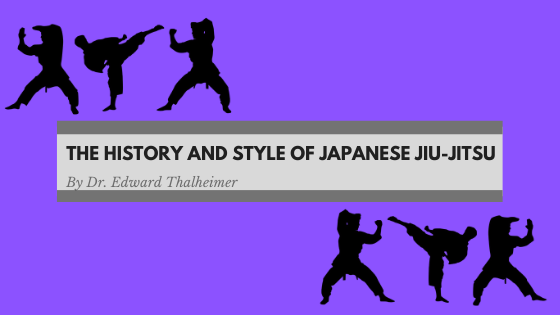The art of jiu-jitsu dates back to feudal Japan and is based on the principle of the soft conquering the hard. It was developed as a way for samurai warriors to fight against armored opponents and prioritized throws, holds, and takedowns over strikes that would be useless against an armored foe.
The roots of what would become jiu-jitsu can be found in Japan’s ancient past, but the first recognized school that taught jiu-jitsu techniques as we would know them was founded in 1532 by Master Takenouchi Hisamori. The grappling techniques taught by the Takenouchi-Ryu were different from modern jiu-jitsu, but they are generally recognized as the foundation of modern art.
The art of jiu-jitsu developed further during the Edo Period (1603-1868). This was a period of civil rest, which left many samurai unable to make an income as soldiers. Swords and other weapons were also banned for civilians during this time, so unarmed martial arts became very popular and more widespread during this time. jiu-jitsu developed into a more systemic discipline during this time. At the height of early jiu-jitsu’s popularity, there were over 700 schools throughout Japan.
In 1868, the power in Japan shifted from the shogunate to the emperor in what came to be known as the Meiji Restoration, and many aspects of samurai culture were banned by imperial decree in 1871. Since this included martial arts, the few remaining practitioners and teachers of jiu-jitsu had to train in secret.
In the early 20th Century, many schools of jiu-jitsu merged with the then-new martial art of judo. Judo was based around the less dangerous jiu-jitsu techniques and focused more on training and competition than combat. The art of aikido, which focused mainly on jiu-jitsu wrist and arm locks, was also developed around this time.
The practice of jiu-jitsu and its related martial arts were once again banned in Japan during the American occupation of the country after World War II. This lasted until 1951 when the popularity of jiu-jitsu began to flourish and spread around the world.
jiu-jitsu remains a popular martial art across the globe. It’s been adopted in many countries, particularly in Brazil, where the Gracie family refined it into Brazilian jiu-jitsu in the 20th Century. Brazilian jiu-jitsu placed a greater emphasis on sparring and competition, which gave rise to the Ultimate Fighting Championship and mixed martial arts as a popular mainstream sport.

